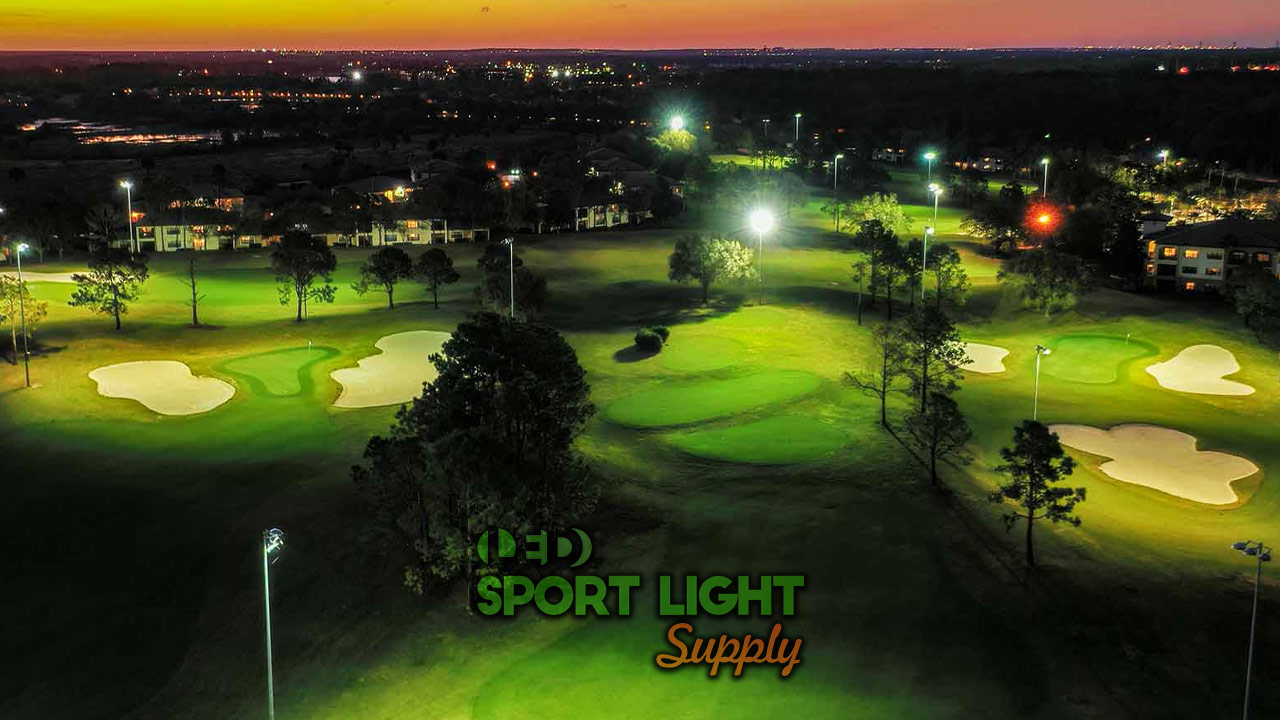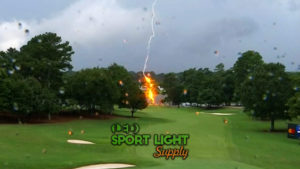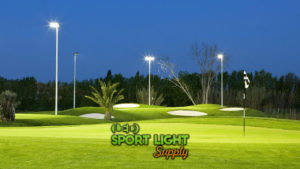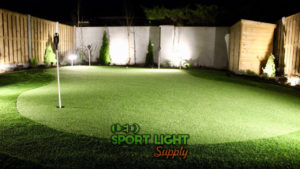Aside from the wide lanes and open ranges of golf courses across the country, there is a standard for golf course lighting. This lighting is meant for night time golfing and is specialized unto itself. Since wider open areas are utilized, lighting is provided with light poles that are strategically placed.
What are the golf course lighting standards?
1. Lux (Footcandle)
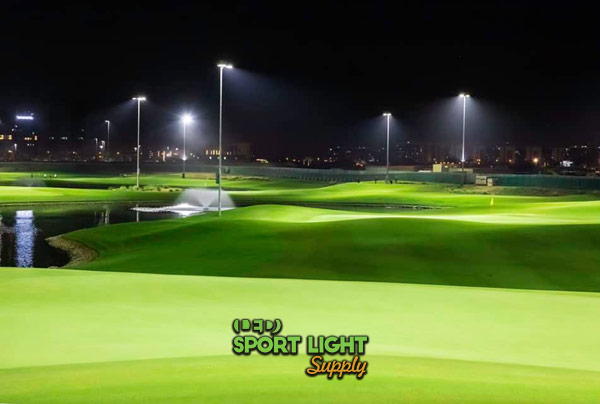
This is known as the brightness standard that’s measured on a lighting scale. Footcandles and Lux go hand in hand since they share a common thread of light measurement. This measurement is then linked to an environment or activity that Lux relates it to. In this case, golfing ranges indeed have a Lux value that is estimated. This is then divided into categories meant for recreational and professional levels.
How many Lux do we need?
a) Recreational
Municipal golf courses that are meant for public usage are deemed recreational. This doesn’t make the course any lesser in value, since many public golf courses are well designed and maintained. The level of Lux for all variants of the recreational driving range is between 100-300 Lux. This level is light is compared to the light you have in your living room up to an office lighting level.
b) Professional
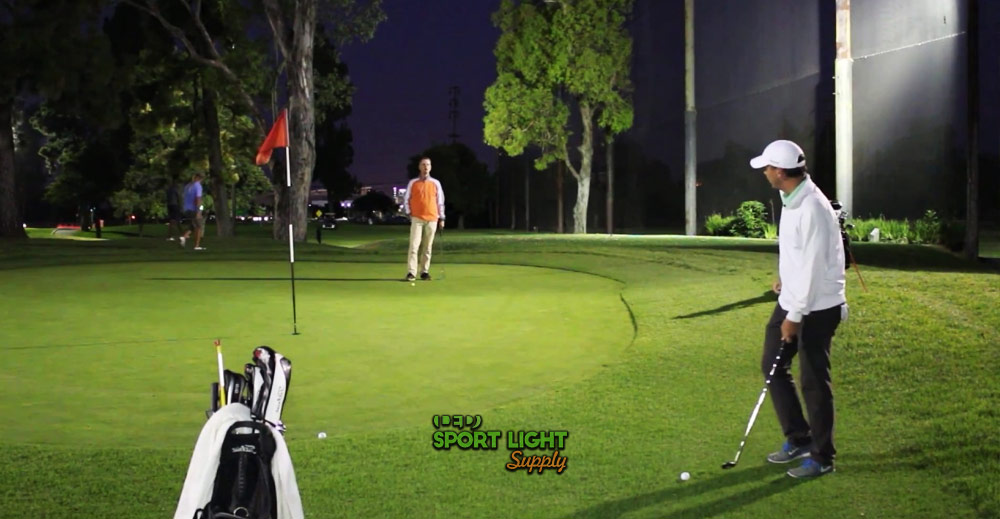
Professional Lux levels are meant for professional players and clubs that have more demand for higher levels of light. This level of light will appear similar to supermarket lighting or library lighting levels. This level is also rated for golf course pros that prefer higher visual levels of light rated at 500-800 Lux. Most professional clubs will make this lighting available for night golfing matches or for those who have limited eyesight due to age.
c) National/International/Masters Tournament and US open/PGA
For the highest tier of lighting, these levels are meant more for the television viewers that are watching a match on TV. It’s also so that cameras will get a better illumination of the course and for the 18 holes of golf. Typically they are using 1000-2000 Lux for these events. If the light isn’t high enough, more lighting will be supplied for each location where the players are playing. It’s lighting that you see in workplaces where precision light is applied at peak levels.
2. Lighting Uniformity Standard for golf range
a) Recreational
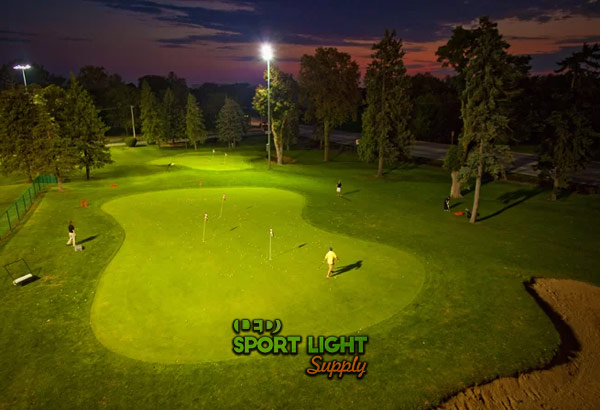 Unlike a standard sports field, the light uniformity is harder to maintain on a golf course. This light is measured in square foot areas and each zone more or less agrees with the uniformity level. A recreational golf range uses 0.4-0.5 for light uniformity. While this doesn’t sound too bright, a recreational golf course having this level of uniformity is acceptable. It’s good, just as long as players can see their playing area and see the golf ball at night.
Unlike a standard sports field, the light uniformity is harder to maintain on a golf course. This light is measured in square foot areas and each zone more or less agrees with the uniformity level. A recreational golf range uses 0.4-0.5 for light uniformity. While this doesn’t sound too bright, a recreational golf course having this level of uniformity is acceptable. It’s good, just as long as players can see their playing area and see the golf ball at night.
b) Professional
Many of the professional clubs that have members playing into the night like brighter lights which give players an advantage. This can be due to the older generation who has failing eyesight but are not limited to golfing professionals who want higher driving range visuals. In any case, the level that you’ll find in standard specification here is 0.5-0.6 rated for light uniformity. This means there will be more light poles within a playing area.
c) International golf tournaments
Professional golf courses that are covering the PGA tours or US Open will all have >0.6 and minimum adjacent uniformity ratio >0.6 for light uniformity. A golf course will be lit accordingly and lights will often be from lighting platforms. They rent portable golf course light tower that can be wheeled to each location. Because filming with HDTCV cameras at night, the light needs to have higher light uniformity than usual. This is so images can be clearly seen.
3. Color temperature
a) Recreational
No matter what kind of lighting is used on recreational golf courses, the color is typically a warm white. This is anywhere from 2500 to 3500K and sticking to a warmer hue. This makes night games relaxing and not so harsh for their golf players. Depending on the golf course that makes their ranges available for the public, the lighting will be similar to the orangey color of street lighting. Each course will range in color depending on their lighting set-up.
b) Professional
On any professional course, you will see that the color temperature is adjusted to remain at 5000K. This high noon daylight is the standard for professional golfing rules. It’s what most golfers will expect when they enter a private estate club or practice course at night. This level of light closely reproduces daylight colors as much as possible. More lights will be placed at each hole. It’s more common that golf lighting experts are consulted in lighting large open areas.
4. Flicker Free
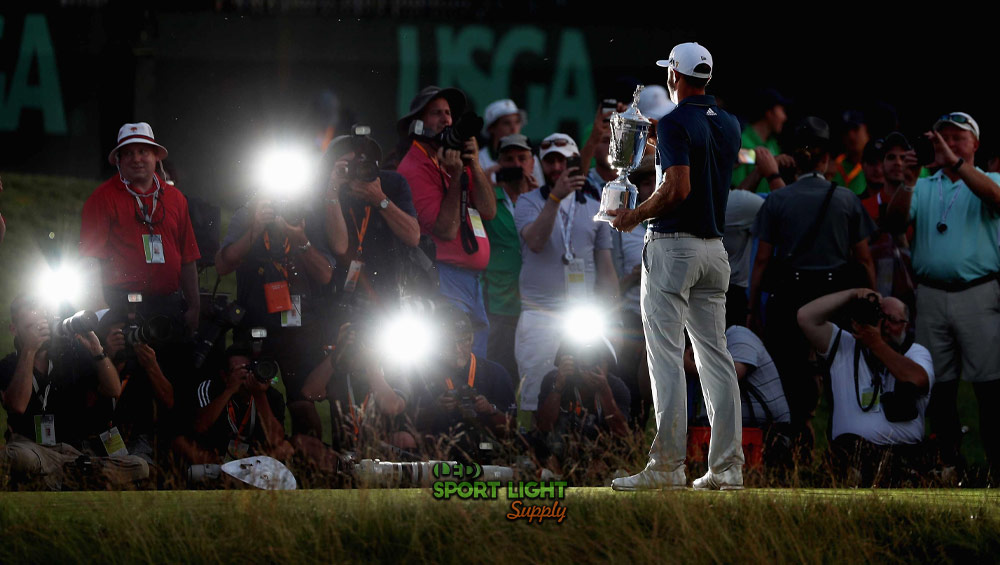
All lights that are installed on professional golf courses must be flicker-free from 10,000Hz for slow-motion cameras. This is so they can capture the motion of the golf ball right at the Tee Off and track it down the driving lane. It can also be useful when the players are simply pitching around the green. Slow-motion shots are especially exciting for catching explosion shots when a famous golfer is driving his ball from the sand trap.
5. Glare rating
Glare is nearly impossible to keep the stray glare from being annoying to golfers at certain locations on the course. For professional courses, you begin to see the lighting design put to good use. This doesn’t mean that recreational golf ranges don’t have good, lighting design either. Ultimately you want your course to have a GR rating of >50 which is keeping the glare barely visible. This all depends on where you stand and how the light is angled.
6. Lifespan
Outdoor lights are all going to have different lifespan periods because of how they are created. The longest lifespan of them all is the LED light that is worth 150,000 hours. This is the preferred type of lighting since it has cost-effective benefits. Next on the list is mercury vapor which can last 10,000-20,000 hours. After that, there is a metal halide lamp which is worth no more than 5,000-20,000 hours. You can see why LED lighting is preferred right away.
7. Spill light/light pollution
How to reduce light pollution
a) Using smaller beam angle
Smaller beam angles are good for very tall light poles that need a higher angle to spread out the light. Because of the beam angle, there is little chance that spill light goes outside of an area. This is one method that works well on flat areas but not such a good idea for landscaped rolling 18 hole ranges. The uneven levels that players will play through would have the light that bleeds through and could impair vision on a shot.
b) Shorter light pole
To increase the chances of reducing light spill, shorter light poles are installed. This is a nice idea but this means that many shorter poles must be added in turn. And this makes it more of a challenge where to add the light poles since these might hinder the path of the ball. So the lighting design will need careful planning so that excessive golf course lights aren’t piling up.
c) Using more light pole
Now each light pole will be responsible for smaller regions, but as mentioned before this is tricky. Anything that may get in the way of a golf ball is not how the game of golf was intended. So lighting needs to be installed where the light reaches an area with the least amount of pole proximity to the player. Considering that each golf range is different, this means they will all have their own lighting design.
d) Adding barn doors on flood lights
This helps to shield the unnecessary glare of lights that are seen from different angles. Barn doors are adjustable metal shutters. These are commonly used on movie lights and control the way that set lighting is seen. Barn doors on floodlights are a lot more simplified and usually have a metal flap that can be adjusted and screwed down. This will be better for taller light poles so light spill is better managed.
Common specifications of golf course lighting
Here are some tips when buying the golf course and driving range lights:
1. Luminous efficiency
If you are using LED lighting the ratio is >150lm/w. Now this means that you need to have a luminous efficiency is greater than 150 Lumens per Watt. Luminous efficiency is one of the things that make LED lighting more optimal. The ratio of Lumens and the level of wattage are managed with optimal results. As opposed to other types of light, LED light has the best luminous efficiency of all the rest.
2. Power and Lumen
Just as you would expect, high power doesn’t mean it’s brighter. Instead, we look at the Lumen output per floodlight. With LED light the first thing you look at is the Lumen output for how bright it will be. Regular lights rely on the wattage to determine the Lumen output. A LED light rated at 100 Lumens is not the same as incandescent light rated at 100 watts. The output will not be the same, so be careful to base what you need from the Lumen level first.
3. Beam Angle
The amount of angle that you’ll find ranges between 15, 22, 45, 60, and 90. These are the common beam angles used on golf courses. The lower angles with 15, 22 are for very tall light poles. This allows the light to expand better from the distance and height involved. The wider the beam angle is going to be, the shorter the pole needs to be. This keeps the light flare to a minimum so there is no light pollution.
4. Color temperature
Color temperature is as important to golf as it makes it possible to see the golf course and the ball clearly. For recreational courses, you will see warmer temperatures that are similar to filament lamps. This can range from 2500-3500K which is early morning to near noon. Then there are professional courses that have 5000K which is obviously a specification for high noon white daylight. Professional courses need higher Kelvin if television cameras are being used.
5. Power supply
Lighting fixtures and floodlights will need a good quality power supply. Among the best brands include MeanWell and Inventronics, since they are reliable and durable with the best superior thermal performance. The power supply that powers LED lights or any other types of filament-based light should be long-lasting too. Both of these brand names have been known to be problem-free compared to other brands.
6. Lighting protection
This is especially important for spacious golf courses without any buildings surrounding it. If you don’t know, golf courses are prone to lightning strikes in the Midwest. Anything that is sticking out from the ground needs to have lightning protection. Each pole needs to be grounded for absorbing lighting and has a lightning rod attached to the tip of the pole. This helps channel electrical current down the pole and away from lighting fixtures.
7. Waterproof rating
If your golf course is in an area that has especially high amounts of rain and moisture, you’ll need an IP66 or higher. IP67 is preferred since it can withstand higher rain on more occasions. Dryer regions will have better luck with IP66 and are good for scattered showers accordingly. The rule of thumb is that rainy weather that lasts more than 2 days needs higher IP ratings for waterproof light fixture resistance.
8. Weight of luminaries
Since not all poles can withstand heavy flood lights, you need to choose a pole based on weight limits. LED light floodlights can be heavier, so you need to pick a pole that can handle the weight placed on it. This makes sure that wind doesn’t cause your pole to topple from being too top-heavy. If there’s only a single floodlight placed on top, the height should also handle all weather conditions including high wind or hurricanes.
Our Conclusion
We hope these golf course lighting standards give you a good idea of how golf course lights should be used. Always take the time to ask questions if you haven’t found the answer you’re reading here. We are committed to helping you choose the right lighting systems for all your golf course needs. No matter how big your 18 hole golf course happens to be, we have lighting solutions that are perfect for you.

